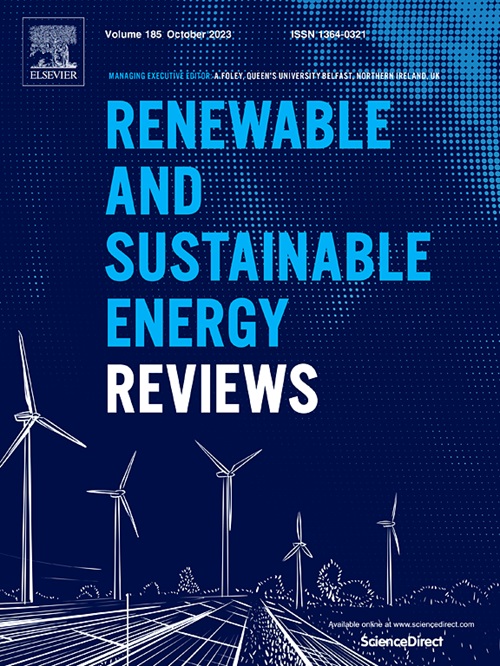Assessing the impact of climate change on the optimal solar–wind hybrid power generation potential in China: A focus on stability and complementarity
IF 16.3
1区 工程技术
Q1 ENERGY & FUELS
引用次数: 0
Abstract
One of the greatest challenges facing humanity today is adapting to climate change and global warming. To mitigate the impact of climate change, an increasing number of countries have committed to transforming their energy systems into zero–emissions systems. Decarbonizing electricity via wind and solar power generation is crucial for China to achieve carbon neutrality by 2060. This study used global climate models to evaluate the impact of climate change on the complementarity, stability, and hybrid power generation potential of wind and solar energy in China in the mid-term (2041–2070) and long–term (2071–2100) under the SSP245 and SSP585 pathways, including calculating the optimal installation ratio. The results revealed that the optimal wind/solar installation ratio in China varies mainly between 0:1 and 0.4:1. The area with optimal complementarity accounts for approximately 19 % of the total area. Climate change is projected to decrease in solar energy resource stability in most northern regions and increase it in southern regions (±10 % to ±20 %). Regarding wind energy, increased stability occurs mainly in Northwest, Central, and East China, with long-term reductions in the coefficient of variation reaching up to 32 %. Under both scenarios, regions with greater power generation potential occur in Southwest and Northwest whereas the potential is lower in the Northeast, Inner Mongolia, and eastern Xinjiang. Under the SSP585 scenario, the long-term future power generation potential ranges from −11.76 % to 11.39 %. This study helps optimize the use of solar and wind energy and provides early warnings for renewable energy development in China to address climate change.

求助全文
约1分钟内获得全文
求助全文
来源期刊

Renewable and Sustainable Energy Reviews
工程技术-能源与燃料
CiteScore
31.20
自引率
5.70%
发文量
1055
审稿时长
62 days
期刊介绍:
The mission of Renewable and Sustainable Energy Reviews is to disseminate the most compelling and pertinent critical insights in renewable and sustainable energy, fostering collaboration among the research community, private sector, and policy and decision makers. The journal aims to exchange challenges, solutions, innovative concepts, and technologies, contributing to sustainable development, the transition to a low-carbon future, and the attainment of emissions targets outlined by the United Nations Framework Convention on Climate Change.
Renewable and Sustainable Energy Reviews publishes a diverse range of content, including review papers, original research, case studies, and analyses of new technologies, all featuring a substantial review component such as critique, comparison, or analysis. Introducing a distinctive paper type, Expert Insights, the journal presents commissioned mini-reviews authored by field leaders, addressing topics of significant interest. Case studies undergo consideration only if they showcase the work's applicability to other regions or contribute valuable insights to the broader field of renewable and sustainable energy. Notably, a bibliographic or literature review lacking critical analysis is deemed unsuitable for publication.
 求助内容:
求助内容: 应助结果提醒方式:
应助结果提醒方式:


